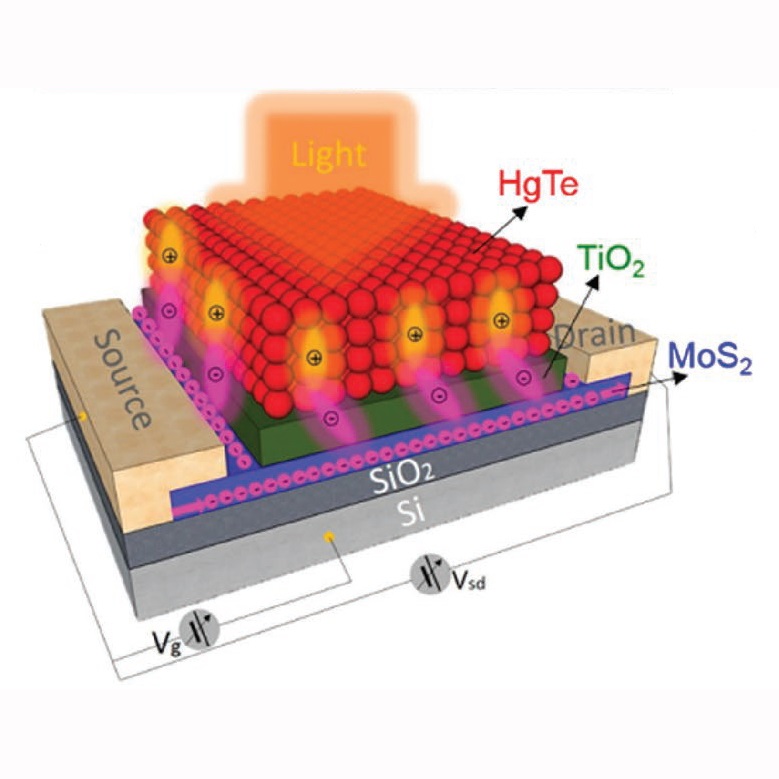07 March 20170
Optical sensing in the short-wave and mid- infrared is of paramount importance for a vast number of applications including surveillance, night vision, product, process and environmental monitoring and spectroscopy. Yet existing technologies, particularly those that extend beyond 2 microns are very costly, non-integrated to CMOS electronics and most of them require thermoelectric cooling to reduce thermal noise. The culprit of this lies in the fact that those systems are based on photodiodes with maximum responsivity in the range of 1-4 A/W depending on their wavelength range.
In a recent paper, published in Advanced Materials, ICFO researchers Nengjie Huo, Shuchi Gupta led by ICREA Prof. at ICFO Gerasimos Konstantatos, demonstrate a new class of SWIR/Mid IR hybrid detectors that instead are based on CMOS compatible material platforms as top-surface detectors and combine synergistically the unique properties of two classes of materials. These two materials are, firstly, a 2-dimensional semiconducting transistor channel made of MoS2 that demonstrates high carrier mobility and low off (dark) current and, secondly, the strong and tunable absorption of colloidal quantum dots.
For this study, HgTe colloidal quantum dots have been employed since they have demonstrated before to cover the full SWIR/mid-IR spectrum. The detectors exploit photo-generated charge transfer from the QD film to the MoS2 channel to achieve for the first time a gain of about 1 million of circulated carriers per single incident photon for this class of QDs. This gain renders the hybrid detector highly responsive which together with the very low noise associated with the high bandgap and 2D-character of the MoS2 has led to specific detectivities on the order of 1012 Jones, two orders of magnitude higher than prior HgTe QD-based photodetectors and on par or better than currently employed, single-crystalline, costly detector technologies.
The outstanding performance of the detector has been achieved at room temperature, clearly confirming that the results obtained in this study are definitely paving the way for low cost, low footprint and low power consumption yet highly sensitive SWIR/mid-IR detectors.

Quantum Dots and 2D materials for SWIR/Mid IR hybrid detectors
ICFO researchers develop an ultra-sensitive, broadband, low-cost hybrid MoS2 - HgTe QD-based photodetector.

Schematic diagram of the hybrids device with light illumination and of the photogenerated carrier separation and transport in the hybrids photodetectors













